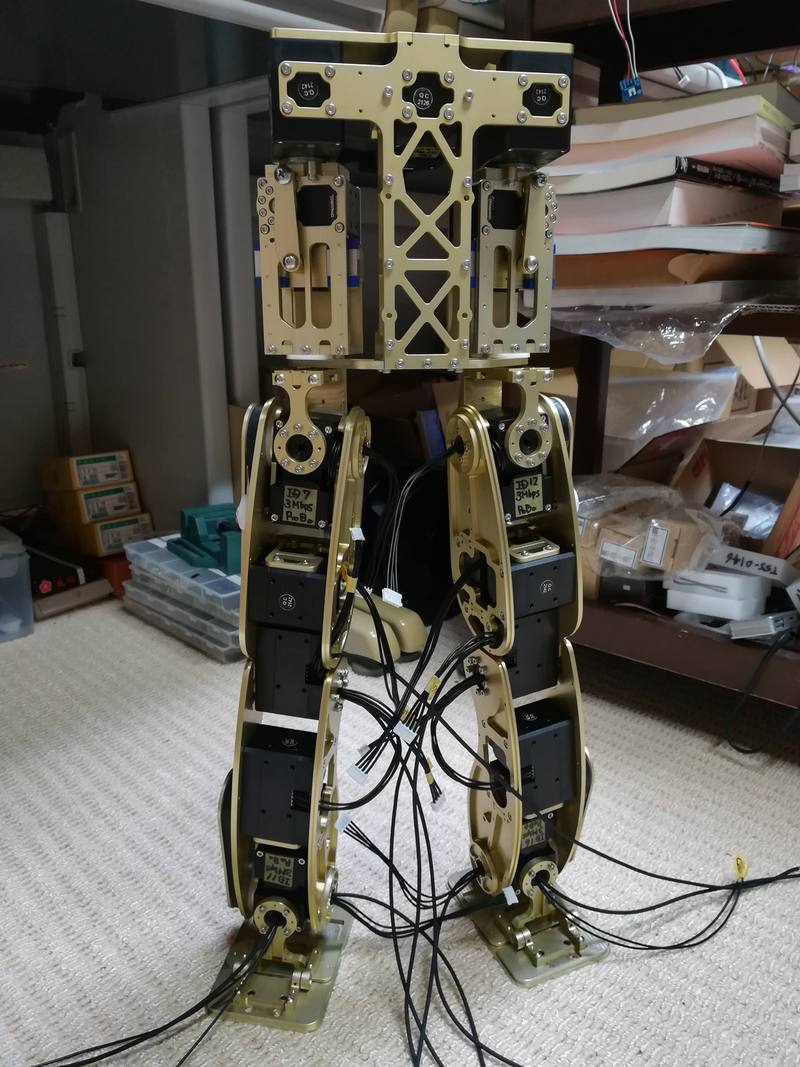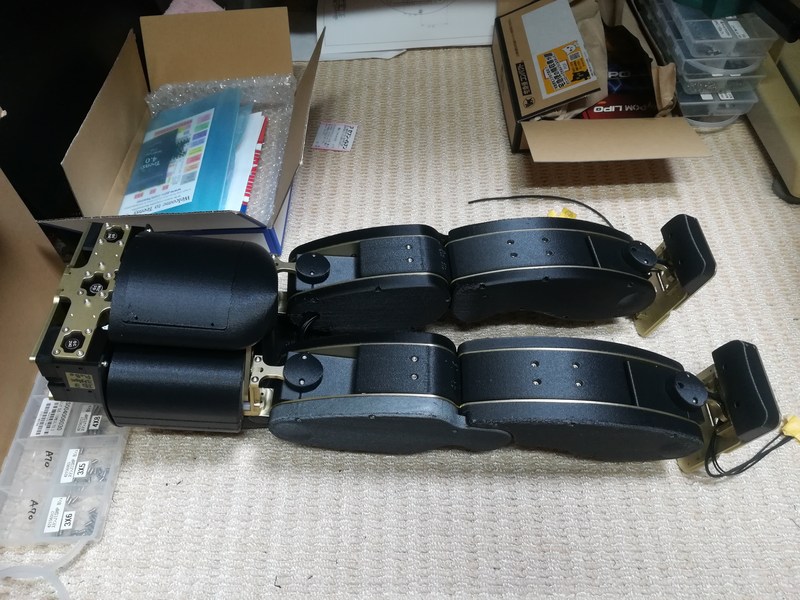Interviews

Interviewer & Japanese Writer: Yamamoto Takaya; Translation & Editing: Matthew Cherry
During his time in the INNO-vation Program, Hiroshi Maeda worked on structuring a two-legged robot that could walk as smoothly as humans. His next challenge was to work on miniaturizing the tech.

The mechanism that Hiroshi Maeda invented.

The same structure is equipped with exterior plating.
“It’s still in the conceptual phase of development, but once it’s completed it’ll look like something straight out of Gundam or Armored Trooper VOTOMS,” Maeda explained. “I’d like to bring it to a state that when children see it, they can’t help but gawk at it because it moves just like in an anime.”
Maeda had thought from the very start that he could develop a robot that would move just like the ones seen on television, but during the development process, his field of view opened up to a completely different possibility. He realized his developments could contribute to the improvement of prosthetic legs.
Several years back, Maeda had an opportunity to try on an artificial leg. He says he felt very uncomfortable at that time. “I think they’ve progressed a bit more now than they had back then, but the artificial leg I tried on didn’t seem to have any ability to absorb impact at all. Once you put your foot on the ground, the shock of impact goes straight to your knees. It was hard to walk, and just the thought of going up a staircase was frightening,” Maeda reflected.
Maeda says there are a lot of people out there who have trouble with rehabilitation due to the limitations of prosthetic legs, as well as those who just have to deal with living with pain in the knees. That’s when he started to connect the dots with the robotic pelvis he worked on during the INNO-vation Program.
“I’m speaking a bit from experience, as I had the idea that walking could be done more smoothly by expanding the movement capabilities of the pelvis. Rehabilitation using prosthetic legs is quite difficult and requires a lot of training and practice. People say it hurts, too. I’d like to help improve the technology to eliminate the pain and training, as well as make it so that people aren’t having to adjust to prosthetic legs, but rather the legs themselves adjust to best fit our bodies,” Maeda shared about his dream.
It’s been over 15 years since Maeda began development on his legged robot. He says health is the most important thing to consider when continuing the development process.
“The kind of people that work hard to implement their own ideas are the same kind that like to walk their own path in life. This means that it’s easy to succumb to recklessness and lose sight of your own health. Developing something takes a long time, but if you’re not taking care of yourself, the process won’t move forward at all. I hope that everyone can put forth their best efforts while keeping their own health in mind,” Maeda said.
With a clean bill of health, Maeda continues down the path of realizing his lifelike two-legged robot, hoping to one day use the tech to help people with prosthetic legs walk without pain.

